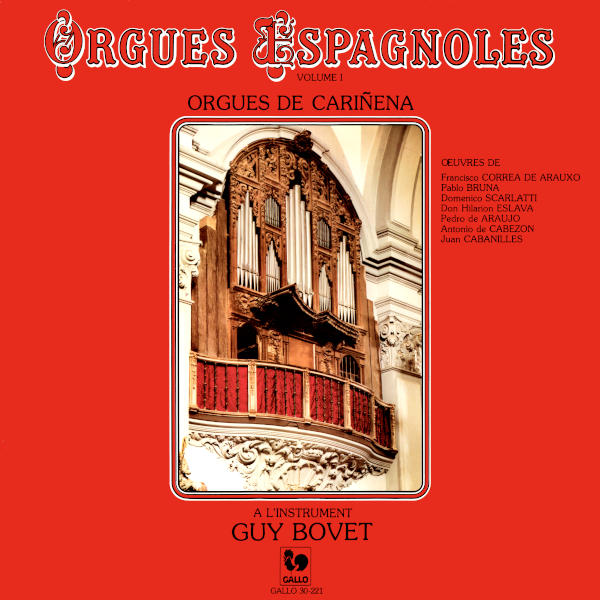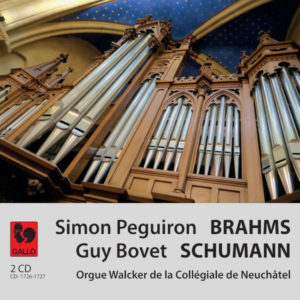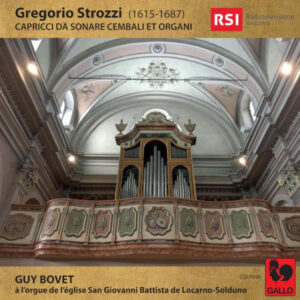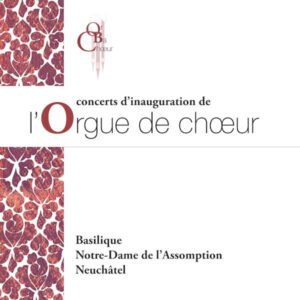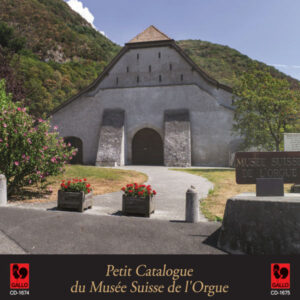Extraits / Excerpts
Orgues Espagnoles, Vol. 1 - Guy Bovet
Orgues Espagnoles, Vol. 1 – Guy Bovet
Pedro de ARAUJO: Batalha de 6. tom – Antonio de CABEZÓN: Diferancias sobre la Gallarda Milanesa – Francisco CORREA DE ARAUXO: Canto Llano de la Immaculada Conceptión de la Virgen Maria “Todo el mundo en general” – Pablo BRUNA: Tiento de mano derecha de los tiples – Juan CABANILLES: Tiento lleno III de todas manos – Tiento de falsas II – Domenico SCARLATTI: 3 Organ Sonatas: Organ Sonata in D Major, Kk. 287 – 3 Organ Sonatas: Organ Sonata in G Major, Kk. 328 – Keyboard Sonata in C Major, Kk. 255 – Don Hilarión ESLAVA: Verso sobre el Pange Lingua – Verso de salmos para la flaute traverjera – Verso 4 sobre el Seculorum
Guy Bovet, Organ
The Cariñiena Organ (Province of Zaragoza)
This blessed country of Spain, spared from the waves of renovation that affected many other parts of Europe, still preserves unaltered (or almost) witnesses of its glorious past. Among many others, the organ of Cariñiena near Daroca and not far from Zaragoza.
Certainly, this instrument is not entirely intact. What was done when the electric blower was installed, for example? The organ had to be adjusted and probably retuned, but it is almost certain that the changes did not affect the sound of the instrument. Although there are stops that may come from different periods, there are no characteristics from periods later than the 18th century.
Father Emilio Moliner attributes part of the instrument to a very ancient period, possibly the 16th century. It is possible that the pipe work of the Cadereta is older than that of the O.M. (main organ), but is it really the case? The keyboard of the Cadereta appears to be original and very old (also very worn), while the keyboard of the O.M., which was replaced a few decades ago, has recently been renovated. It is certain that if the Cadereta existed before the O.M., the entire instrument underwent significant modifications during the construction of the O.M., and perhaps it was modified again during the installation of certain stops (especially certain ranks of the pipes, which are pulled differently from the rest of the stops). The pipes were all roughly adjusted (they look peeled like bananas) during a temperament modification or a change in pitch. Currently, the temperament is unusual (yet not lacking charm). In order to record, we had to remove the dust from the organ, retune most of the stops (often repairing the damaged pipes with makeshift means, wondering why they were touched in the first place since they were more accurate in their original state), and fix a small hole in the bellows.
The instrument follows a common layout found in most of Spain: its facade completely occupies one of the arches overlooking the choir on the first floor. The instrument is located behind this facade, beneath the vault. Behind the organ, which is enclosed by doors, there is a room where the blower is installed—a large reservoir that used to be supplied by two high-placed wedge-shaped bellows, operated by a T-shaped lever pulled downward.
While the O.M. is elevated, with the windchest at human height behind the chamades and some fixed stops, the Cadereta is placed on the ground and divided into two parts—one open and the other situated in an expression box that is operated by a lever. The few pipes of the Contrabass (pedal) are partly in the facade, on each side, and partly inside the organ, from front to back.
- Categories
- Composers
- Interprets
- Booklet
